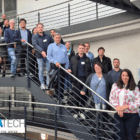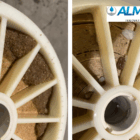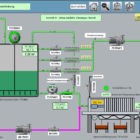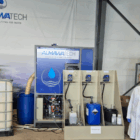Water treatment plants are central systems in industrial and municipal water management. They are used to treat raw water from natural sources or process water from industrial applications so that it is suitable for the intended use. These systems play a crucial role in ensuring water quality, resource efficiency and compliance with legal requirements.
Table of contents
Definition and meaning
Water treatment plants are technical systems that use physical, chemical and biological processes to remove impurities from water. They enable the use of raw water from various sources such as rivers, lakes, groundwater or wastewater streams by removing impurities and adapting the chemical and physical properties of the water to specific requirements.
Areas of application:
- Industry: process water, cooling water, boiler water, water for food and beverage production.
- Municipalities: Drinking water treatment and wastewater treatment.
- Water recycling: Treatment of wastewater for reuse in industrial processes or for feeding into bodies of water.
Components and structure of water treatment systems
A typical water treatment system consists of several stages that are coordinated with each other in order to gradually reduce or eliminate impurities.
1. pretreatment
Pre-treatment is used to remove coarse impurities from the raw water and to protect the downstream stages from overloading or damage.
Screens and strainers:
Mechanical devices that retain coarse solids such as branches, plastic parts or larger particles. These components are particularly important in the treatment of surface water or industrial wastewater with coarse contaminants.
Technical aspect: Mesh sizes vary between 1 mm (fine screens) and 100 mm (coarse screens) depending on requirements.Grit trap:
Separates heavier, sedimentable particles such as sand, silt and mineral deposits by gravity. This reduces wear on pumps and pipelines.
Typical designs: Horizontal grit traps or circular grit separators with air supply to improve separation.Oil separator:
Removes free, floating oil and grease from the water. These separators utilize the density differences between oil and water and can optionally be supplemented with coalescence filters to increase efficiency.
2. main treatment stages
The main treatment stages are the core of the water treatment plant. Physical, chemical and biological processes are used here to remove dissolved, colloidal and organic impurities.
Physical procedures
Filtration:
Filtration systems, such as multi-layer filters or disc filters, remove particles and suspended matter.
Technical aspects:- Filter materials such as quartz sand, activated carbon or anthracite.
- Backwash function for cleaning the filters.

Photo: Our ALMA FIL multi-layer filters with downstream ALMA ION ion exchangers
- Ultrafiltration (UF):
Removes particles, viruses and bacteria through membranes with pore sizes of 0.01-0.1 micrometers. - Nanofiltration (NF):
Reduces hardness formers such as calcium and magnesium. - Reverse osmosis (RO):
High-pressure process for removing salts, organic substances and micropollutants. Ideal for the production of pure or ultrapure water.
- Ultrafiltration (UF):
Sedimentation:
In sedimentation tanks or lamella clarifiers, heavy particles sink to the bottom by gravity, where they can be collected and removed. Sedimentation is often used as a precursor to chemical or biological processes.
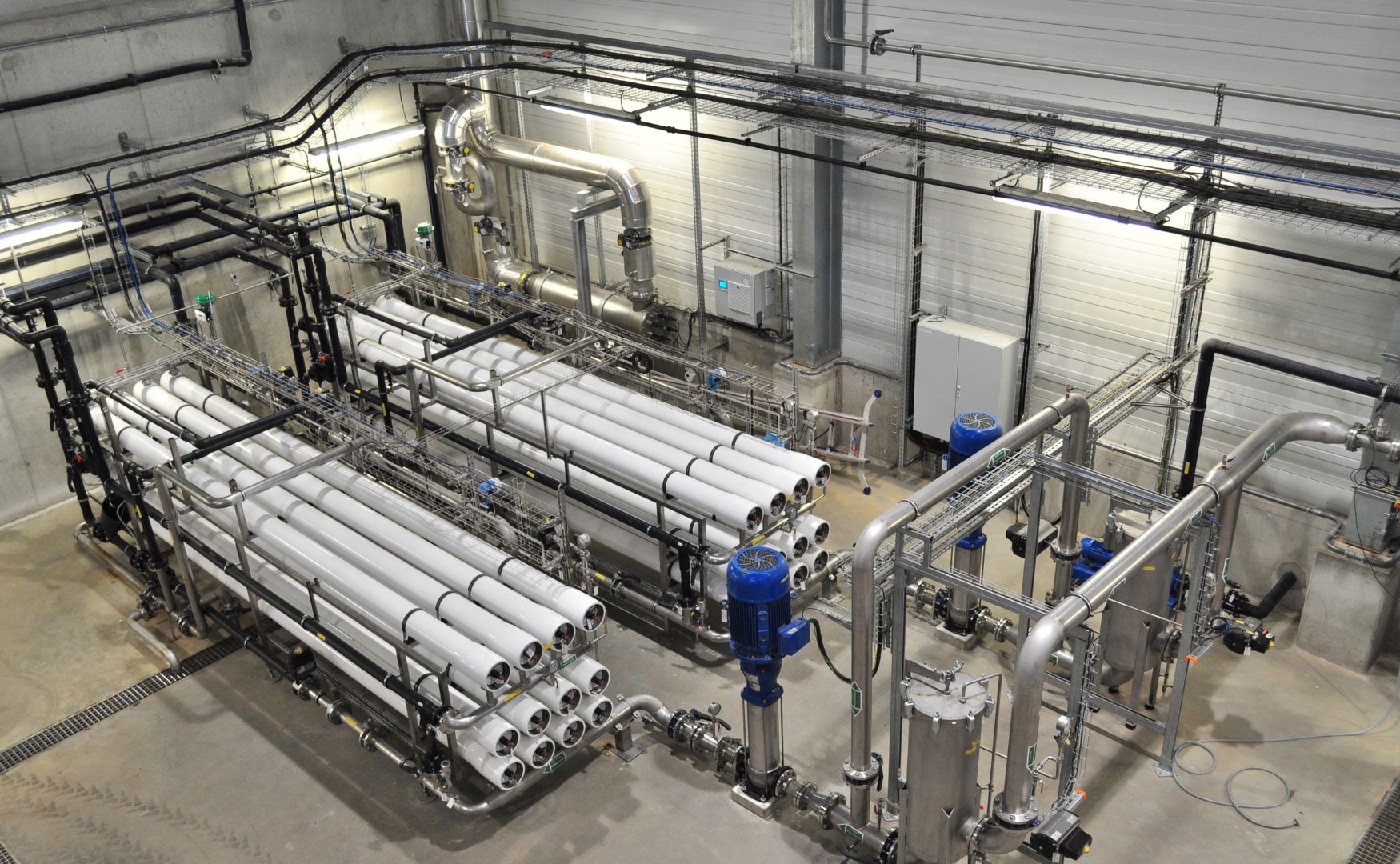
Photo: Our ALMA OSMO reverse osmosis system for in-house water recycling
Chemical processes
Precipitation and flocculation:
Chemical reagents such as iron or aluminum salts are used in CP systems to convert dissolved pollutants into solid particles. Flocculants (polymers) promote the formation of stable flocs.- Ozone, chlorine or hydrogen peroxide oxidize organic pollutants and micropollutants.
- Advanced Oxidation Processes (AOPs): Highly reactive hydroxyl radicals decompose even substances that are difficult to break down.
Ion exchange:
Ion exchange resins specifically bind dissolved ions (e.g. heavy metals, hardness formers) and exchange them for harmless ions such as sodium or hydrogen.
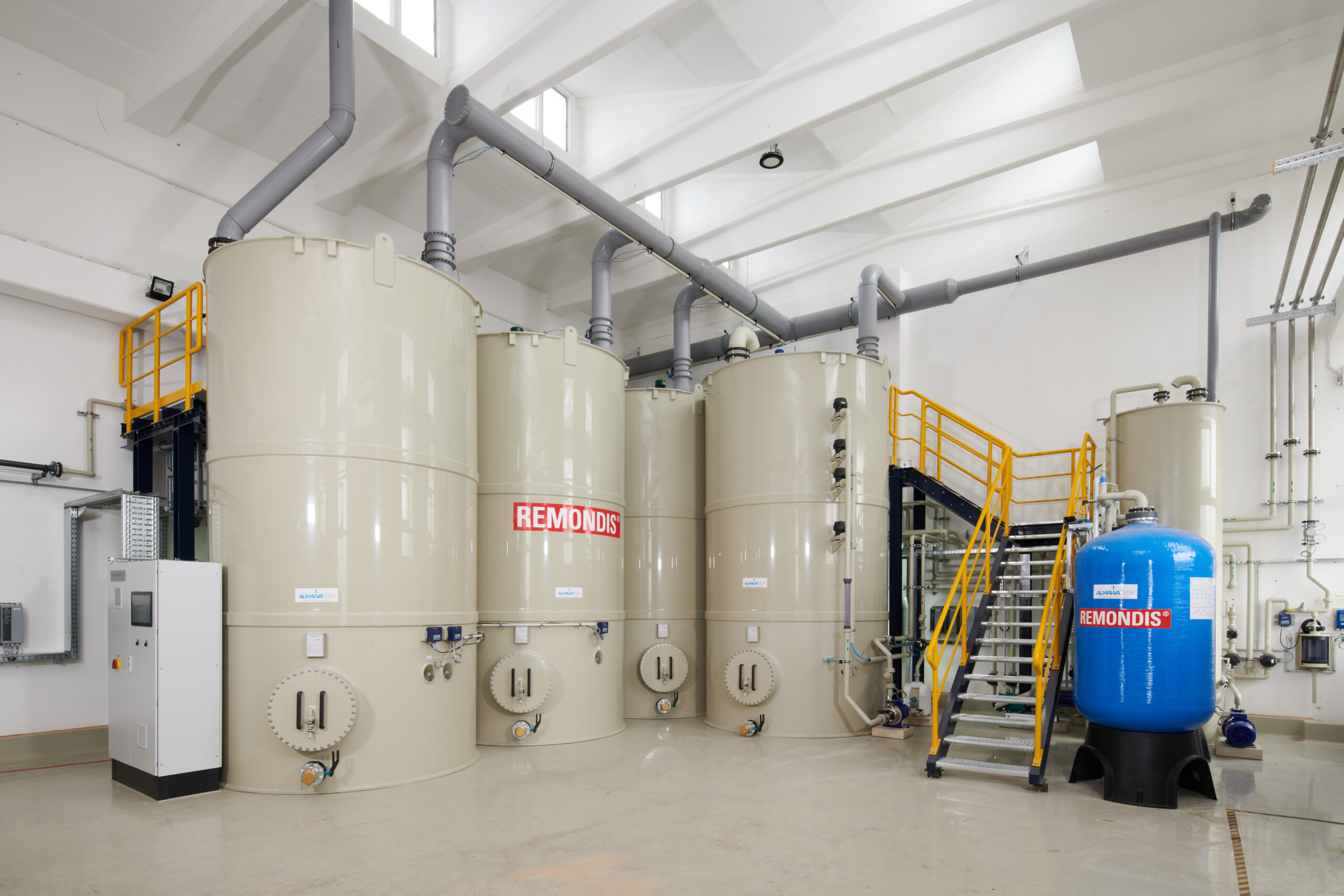
Photo: Example of a CP system for the removal of heavy metals, AOX and hydrocarbons(ALMA CHEM MCW)
Biological processes
Activated sludge process:
Microorganisms break down organic loads aerobically. The process is particularly effective for reducing COD (chemical oxygen demand) and BOD (biochemical oxygen demand).Biofiltration:
Organic substances are biodegraded in bioactive filters with microbially colonized media. Used in pre-treatment before membrane processes or in the treatment of process water.Anaerobic reactors:
Without oxygen, microorganisms convert organic substances into biogas (methane and CO₂). These processes are ideal for highly concentrated industrial wastewater.
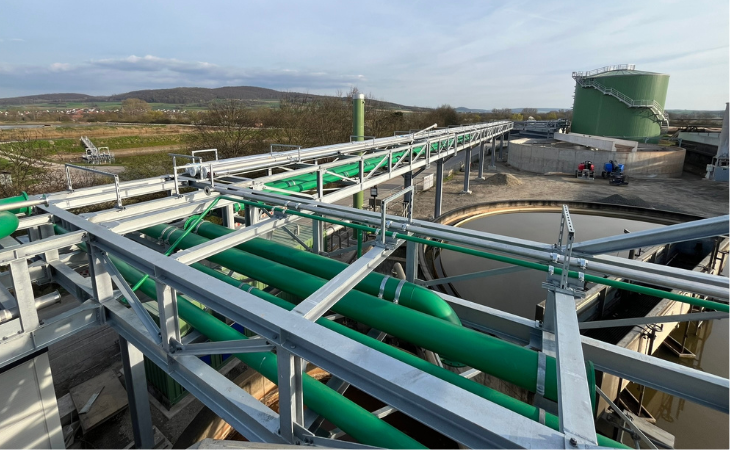
Photo: Our ALMA BHU GMR biogas plant for generating energy from wastewater
3. follow-up treatment
Post-treatment ensures that the desired water quality targets are achieved. It is particularly important for sensitive applications such as cooling water, boiler water or when complying with legal discharge limits.
UV disinfection:
Ultraviolet light destroys the DNA of bacteria, viruses and parasites and prevents them from reproducing. UV disinfection is chemical-free and fast.Polishing:
- Fine material filtration using activated carbon or membranes removes the last organic residues and suspended solids.
- Objective: Achieving pure water quality or freedom from residual substances for specific applications.
pH adjustment:
Acids or bases are dosed into neutralization systems in order to adjust the pH value to the requirements of the downstream processes or the discharge limits.
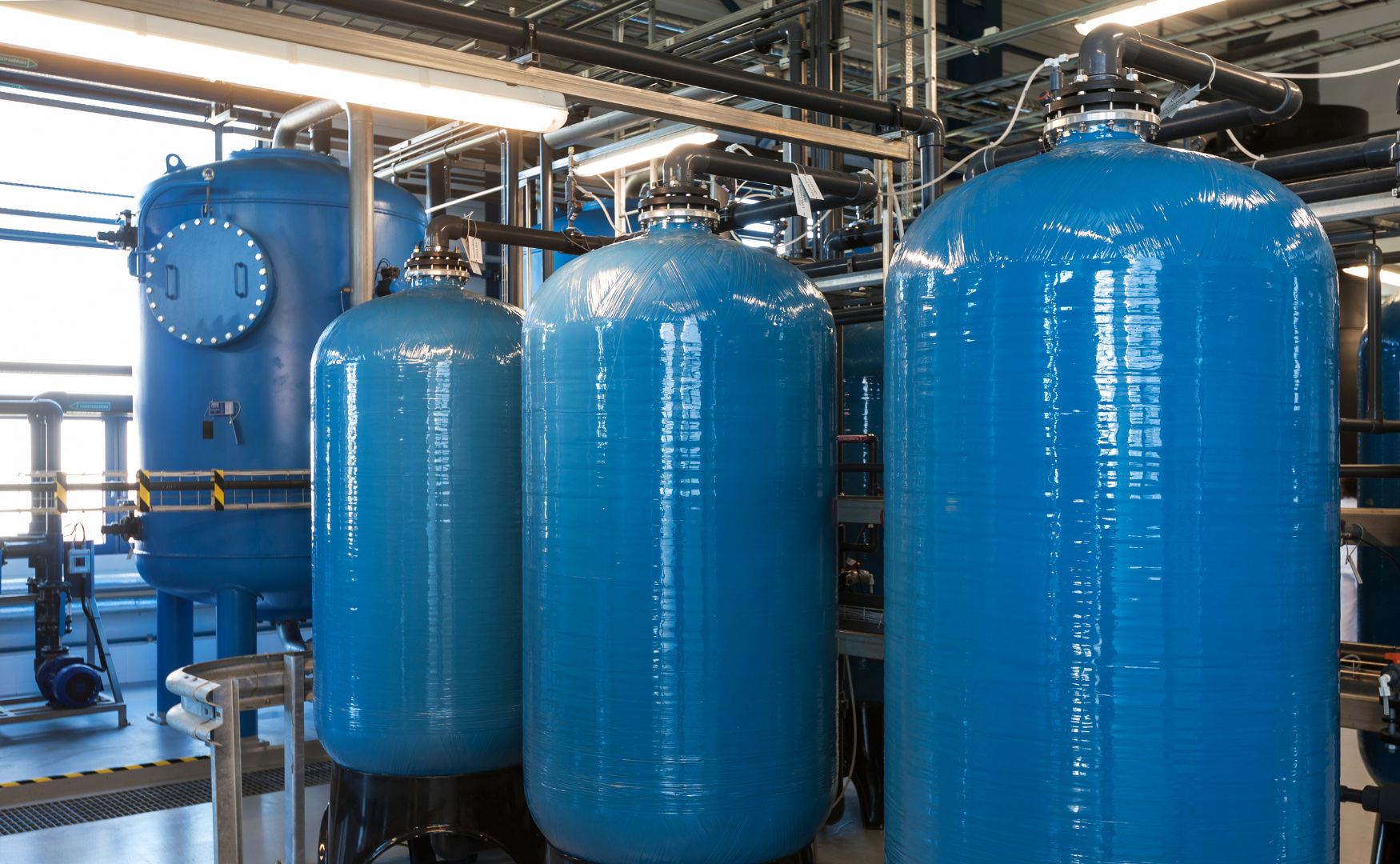
Photo: Activated carbon filter installed in GRP tanks(ALMA Fil AK)
Key technological processes: CP systems, biofiltration and membrane systems
Choosing the right key technologies in water treatment is crucial to ensure efficient treatment and reuse of water. Chemical-physical plants(CP plants), biofiltration and membrane plants (especially reverse osmosis) are three central technologies that each address specific challenges and, in combination, achieve optimal results for industrial water treatment and water recycling.
1. chemical-physical plants (CP plants)
Why CP systems are a key technology:
CP systems are indispensable for the pre-treatment of wastewater containing heavy metals, which is produced in many industrial processes, e.g. in metal processing, electroplating or surface treatment. They treat the wastewater so that it can be efficiently recycled in downstream reverse osmosis systems.
Technology and functionality:
- Neutralization: The pH value is adjusted to an optimum range by adding acids or alkalis to enable the precipitation of heavy metals.
- Precipitation: Dissolved heavy metals (e.g. nickel, zinc, chromium) are converted into insoluble hydroxides by adding precipitants (e.g. milk of lime, ferric chloride).
- Flocculation: Flocculants promote the formation of stable particles that are easier to separate.
- Sedimentation: The solid particles sink to the bottom of a sedimentation tank, where they are collected and disposed of.
Areas of application:
- Pre-treatment for reverse osmosis systems: Heavy metals and other critical substances must be removed prior to membrane filtration in order to prevent fouling and scaling of the membranes.
- Industrial applications: Wastewater treatment to comply with legal limits before discharge into the public sewer system.
Advantages:
- High efficiency in the removal of heavy metals.
- Protection of downstream membrane systems against damage and contamination.
- Compliance with legal discharge limits for heavy metals.
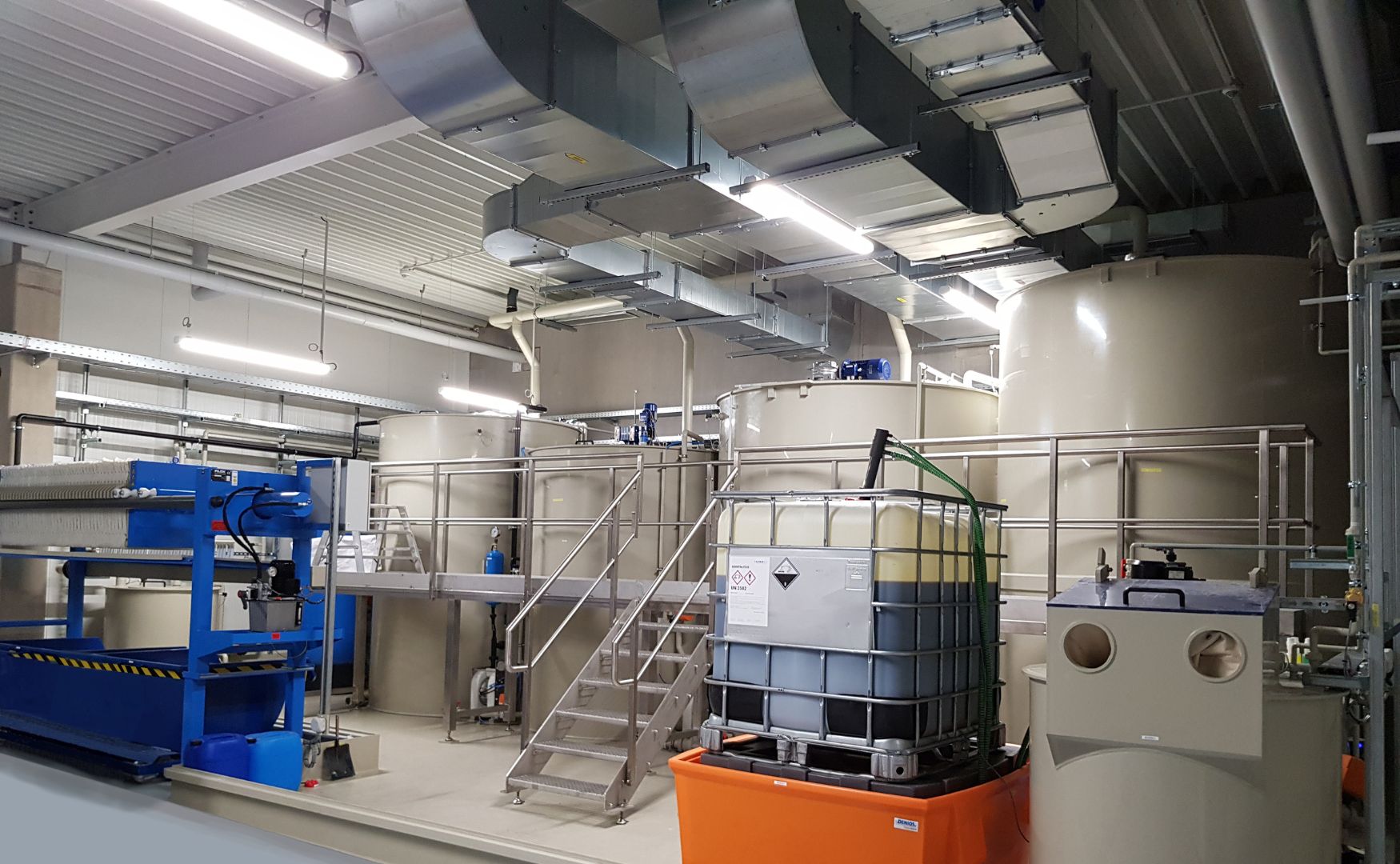
Photo: Our CP system ALMA CHEM MCW with sludge dewatering through our chamber filter press
2. biofiltration
Why biofiltration is a key technology:
Biofiltration systems are ideal for treating organically contaminated wastewater, for example from the food industry, chemical industry or paper industry. They reduce the organic load and prevent biofouling in downstream reverse osmosis systems.
Technology and functionality:
- Microbial degradation: Microorganisms settle on bioactive filter media (e.g. sand, plastic granulate, activated carbon) and degrade organic compounds such as hydrocarbons, fats and proteins.
- Aeration: Oxygen is introduced into the filters to promote the activity of aerobic microorganisms.
- Particle filtration: In addition to biological activity, biofiltration also removes suspended solids and solids mechanically.
Areas of application:
- Pre-treatment for reverse osmosis systems: Reduction of organic loads to minimize fouling and clogging of the membranes.
- Industrial applications: Treatment of process water in the food and beverage industry and for organically contaminated waste water in the chemical industry.
Advantages:
- Sustainable, chemical-free removal of organic compounds.
- Extended service life and improved efficiency of downstream membrane filtration.
- Flexibility in adapting to different wastewater compositions.
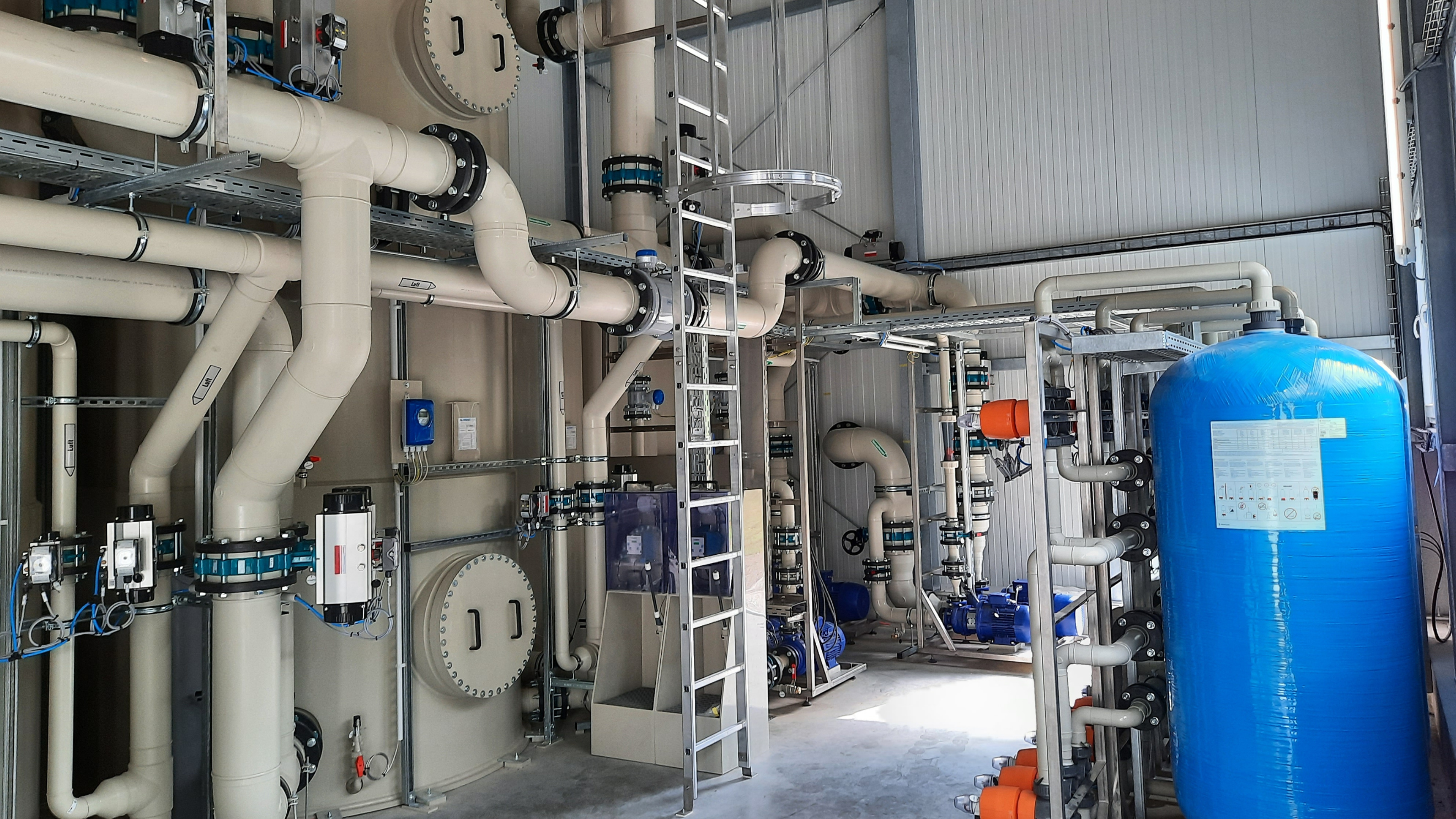
Photo: Our ALMA BioFil Compact biofiltration system for treating wastewater upstream of reverse osmosis systems
3. membrane systems (reverse osmosis)
Why reverse osmosis is a key technology:
Reverse osmosis (RO) is the backbone of water recycling. It removes almost all dissolved salts, organic pollutants, trace substances, PFAS (perfluorinated and polyfluorinated alkyl substances) and other micropollutants and enables water to be reused in industrial processes.
Technology and functionality:
- High pressure process: Water is pressed through semi-permeable membranes under high pressure (10-70 bar).
- Retention of impurities: Dissolved substances such as salts, heavy metals, organic molecules and micropollutants remain on the concentrate side, while purified water (permeate) passes through the membrane.
- Modular design: Systems can be scaled according to requirements and combined with pre- and post-treatment stages.
Areas of application:
- Water recycling: recovery of process water in the electronics, chemical and food industries, for example.
- Removal of trace substances: Reduction of PFAS, drug residues and pesticides in industrial wastewater.
- Production of pure and ultrapure water: supplying cooling and boiler systems with demineralized water.
Advantages:
- Removes up to 99 % of dissolved substances and pollutants.
- Allows waste water to be reused and reduces the need for fresh water.
- Flexibility and high scalability for a wide range of requirements.
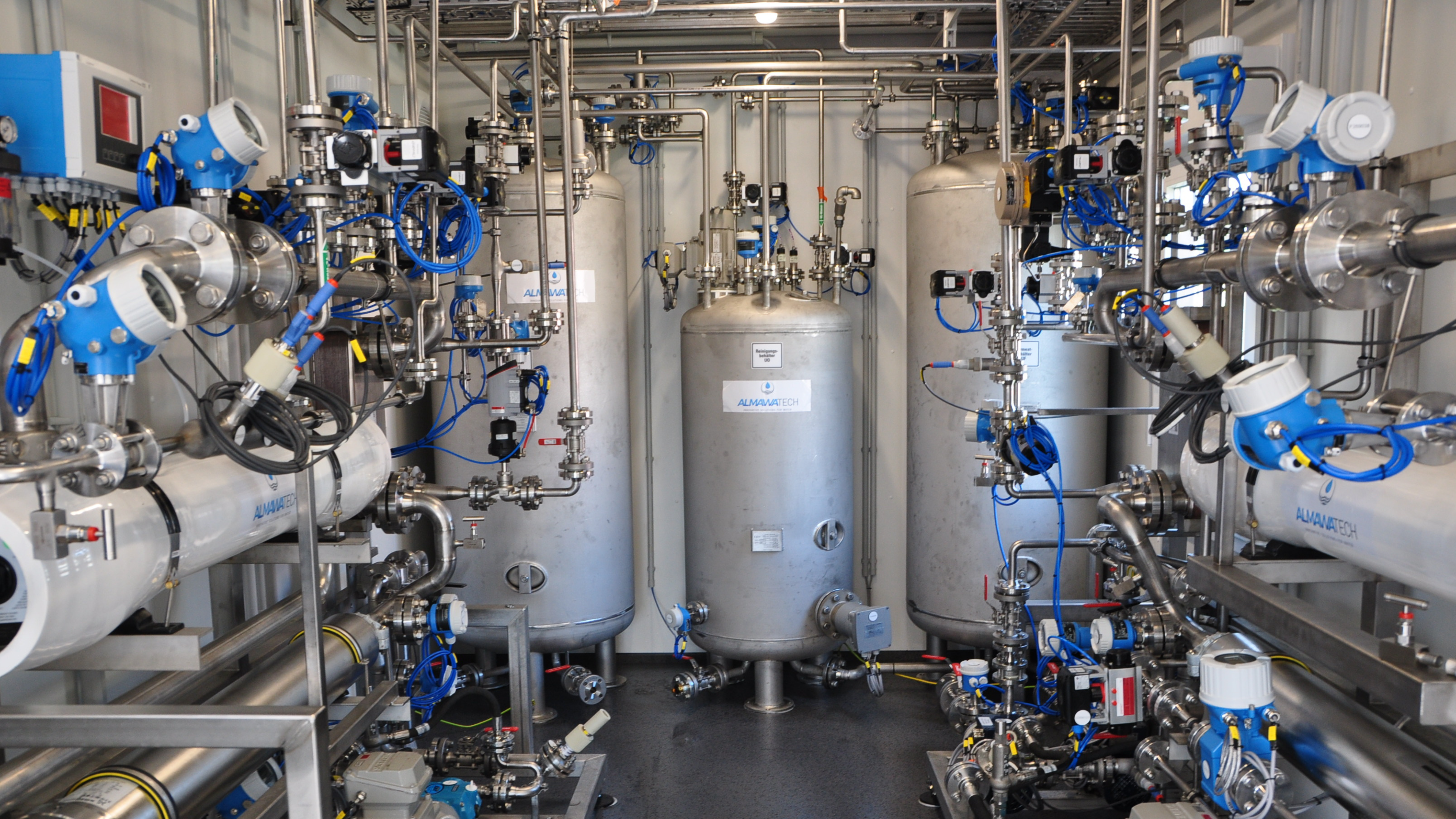
Photo: Our ALMA OSMO reverse osmosis system for removing PFAS, installed in the ALMA MODUL technical room container
Requirements for water treatment plants
Quality standards:
- Drinking water quality: Requires the complete removal of germs, organic substances and potential pollutants.
- Process water: Depending on the application, low salt content, freedom from hardness or chemical stability are required.
- Wastewater: Compliance with legal discharge limits as defined in the Water Framework Directive or local regulations.
Flexibility and scalability:
- Modular design for adaptation to changing raw water qualities and production requirements.
- Integration of monitoring systems for monitoring parameters such as pH value, conductivity, TOC and COD.
Future prospects
The further development of water treatment systems focuses on:
- Energy efficiency: Integration of energy-efficient pumps and intelligent control systems.
- Digitalization: real-time monitoring and control through IoT technologies and AI.
- Sustainability: Reduction of chemical consumption and minimization of residues, especially in membrane processes.
Conclusion
Water treatment plants are indispensable for ensuring water quality in industry, municipalities and the environment. They enable the efficient use of resources, protect bodies of water and meet the high requirements for process and drinking water. Thanks to the use of state-of-the-art technologies, they can be individually adapted to the requirements of the respective application and thus make a decisive contribution to sustainable water management.
For further information on our products, please feel free to contact us at any time!


